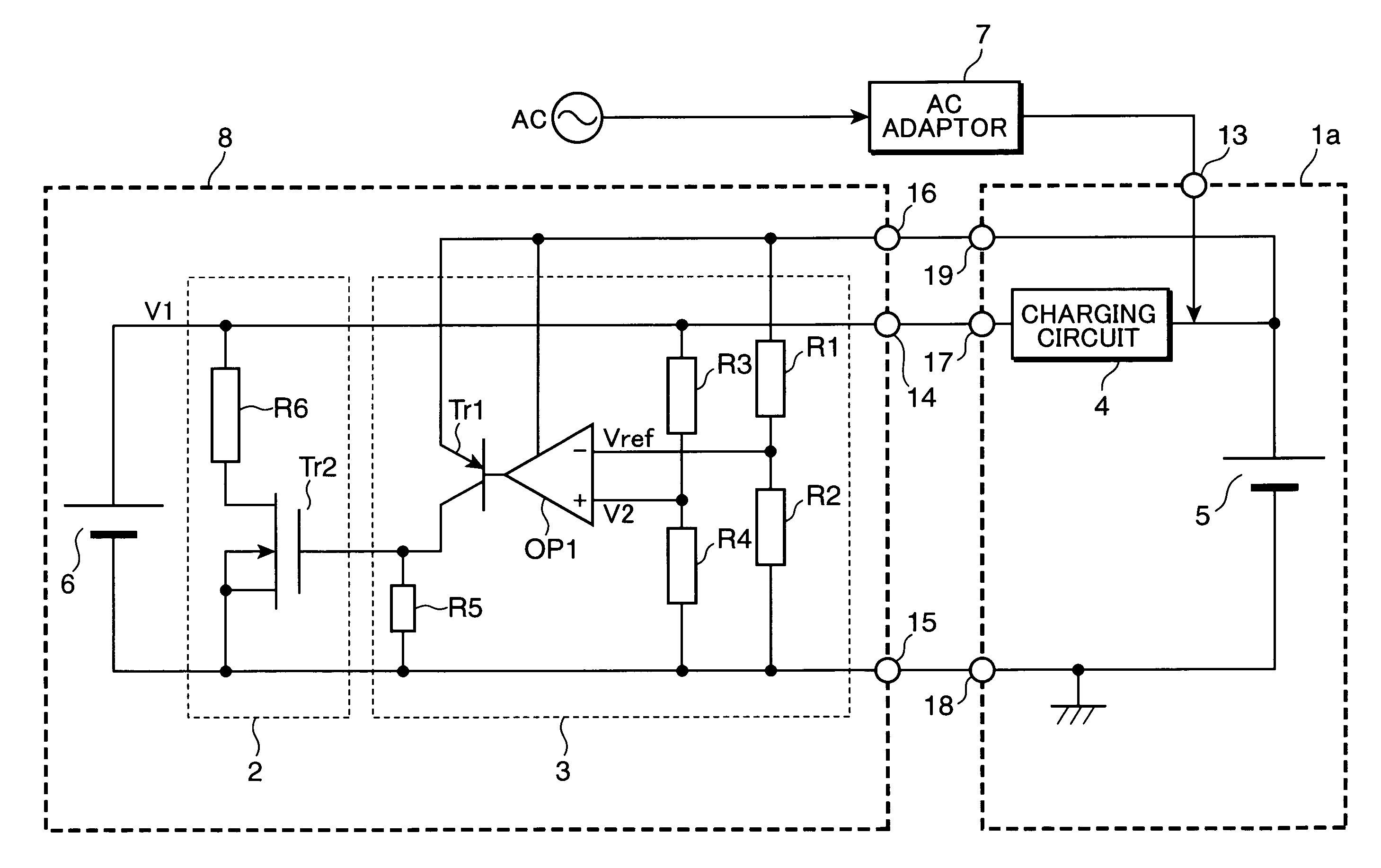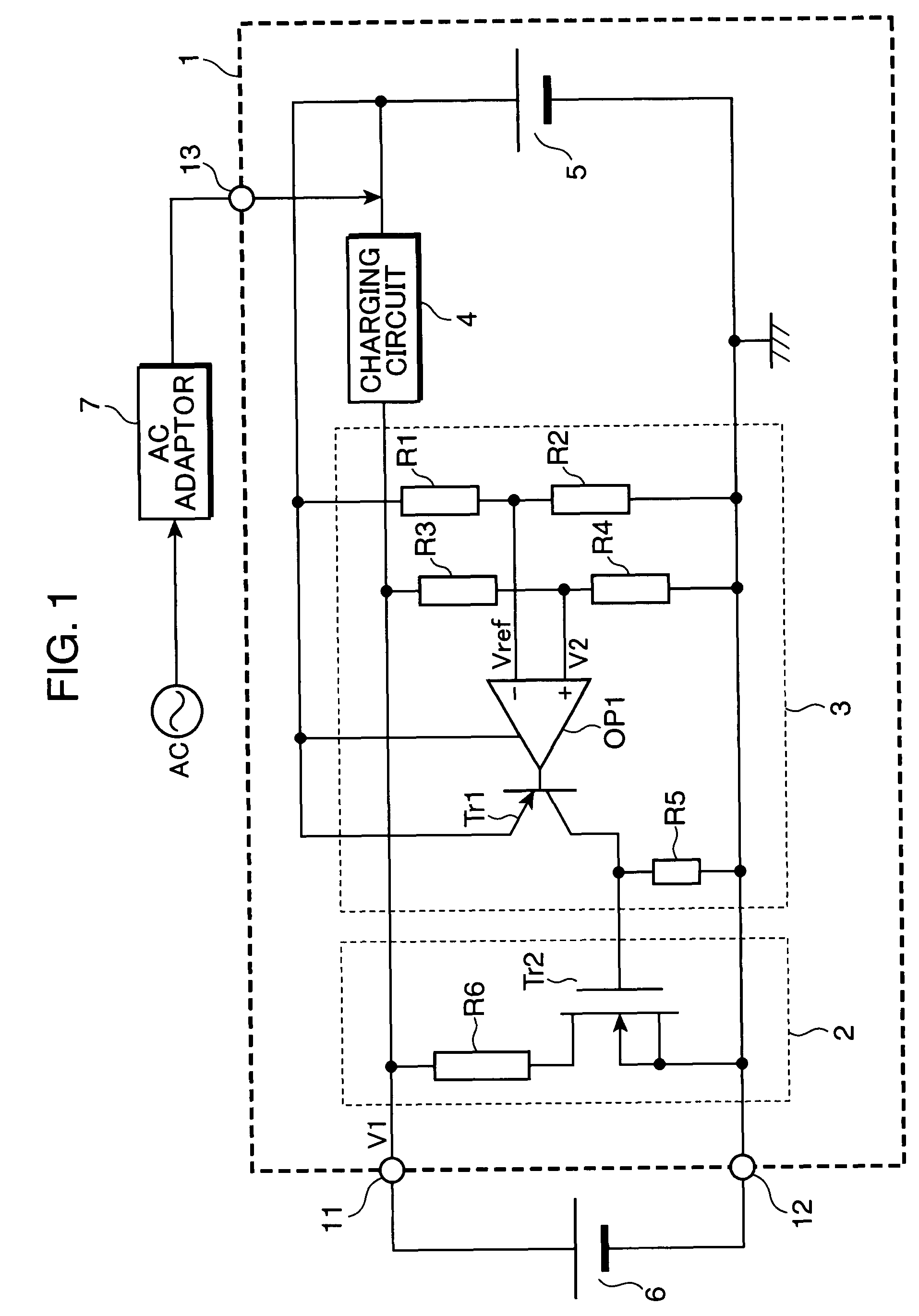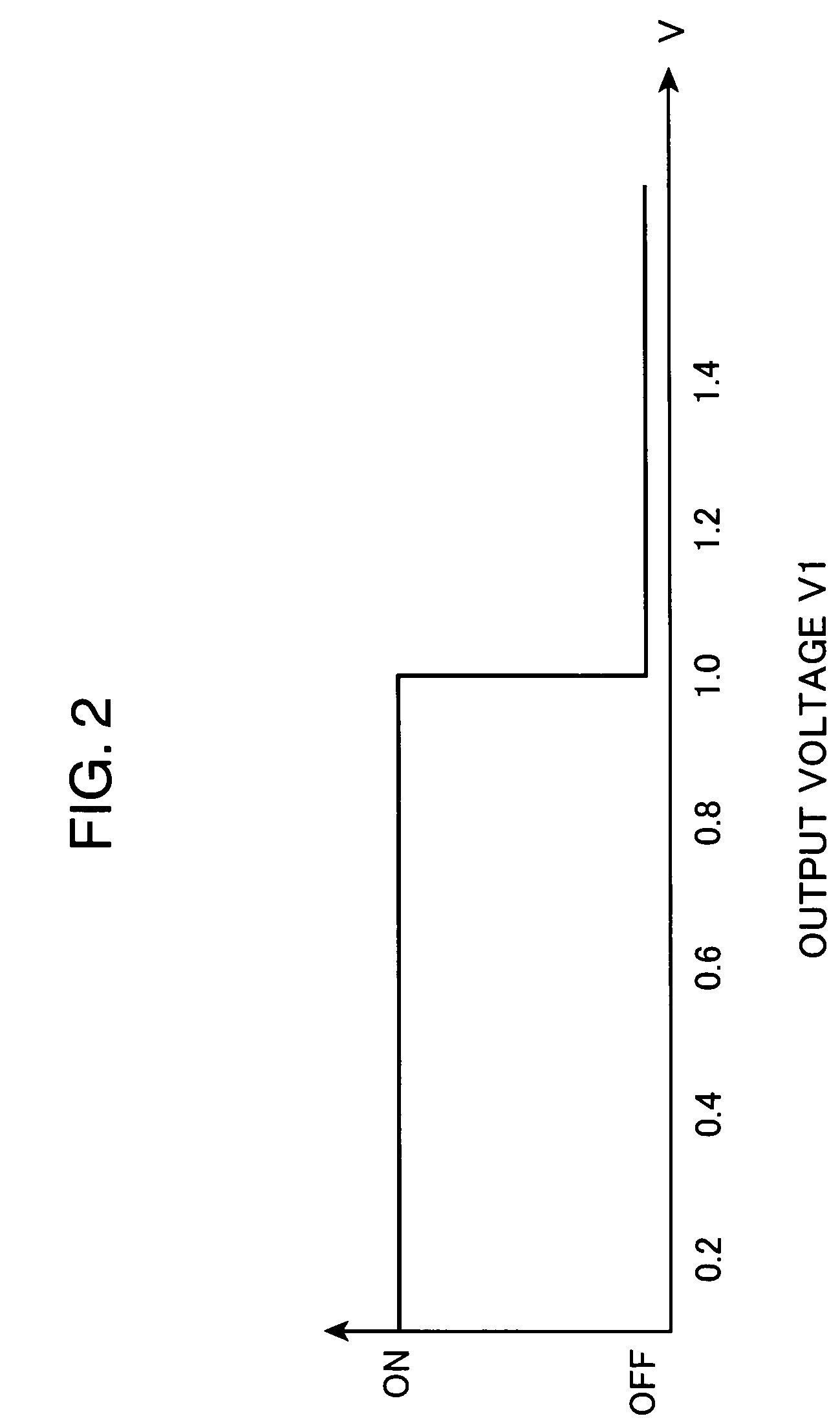Electrical device and battery pack for preventing polarity reversal of battery
a technology of electric devices and batteries, applied in the direction of cell components, safety/protection circuits, primary cell maintenance/service, etc., can solve the problems of reducing the service life of secondary batteries, inconvenient use, and drastic temperature rise of cells, so as to prevent polarity reversal and less concern
- Summary
- Abstract
- Description
- Claims
- Application Information
AI Technical Summary
Benefits of technology
Problems solved by technology
Method used
Image
Examples
Embodiment Construction
[0030]Hereinafter, favorable embodiments of the present invention will be described with reference to drawings. The codes common in respective Figures indicate the same components, and duplicated description is omitted. FIG. 1 is a block diagram showing an example of the configuration of the electrical device in an embodiment of the present invention. The electrical device 1 shown in FIG. 1 is a portable electrical device such as cellphone or digital camera, using a secondary battery as its power source. The electrical device 1 shown in FIG. 1 has, for example, a positive electrode terminal 11, a negative electrode terminal 12, an external-power-source lead terminal 13, a short circuiting portion 2, a voltage detector 3, a charging circuit 4 (charger), and a secondary battery 5. The electrical device 1 is configured to charge the main power source, secondary battery 5, with output power from an auxiliary power source, primary battery 6 (battery), connected externally to the positive...
PUM
| Property | Measurement | Unit |
|---|---|---|
| electric potential | aaaaa | aaaaa |
| voltage | aaaaa | aaaaa |
| DC voltage | aaaaa | aaaaa |
Abstract
Description
Claims
Application Information
 Login to View More
Login to View More - R&D
- Intellectual Property
- Life Sciences
- Materials
- Tech Scout
- Unparalleled Data Quality
- Higher Quality Content
- 60% Fewer Hallucinations
Browse by: Latest US Patents, China's latest patents, Technical Efficacy Thesaurus, Application Domain, Technology Topic, Popular Technical Reports.
© 2025 PatSnap. All rights reserved.Legal|Privacy policy|Modern Slavery Act Transparency Statement|Sitemap|About US| Contact US: help@patsnap.com



